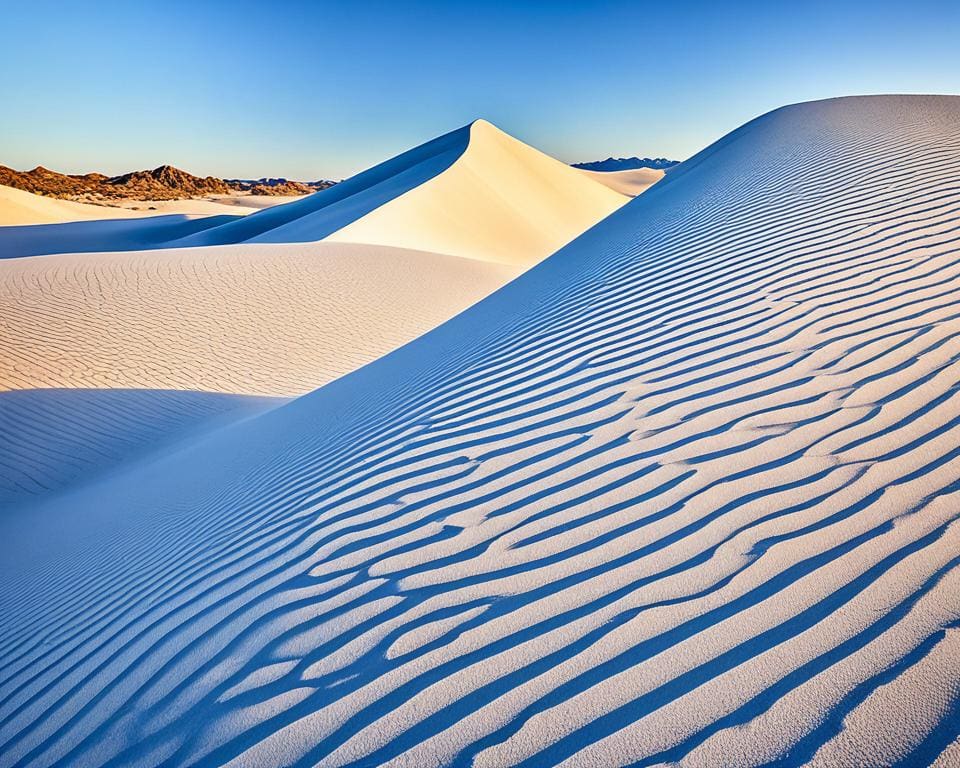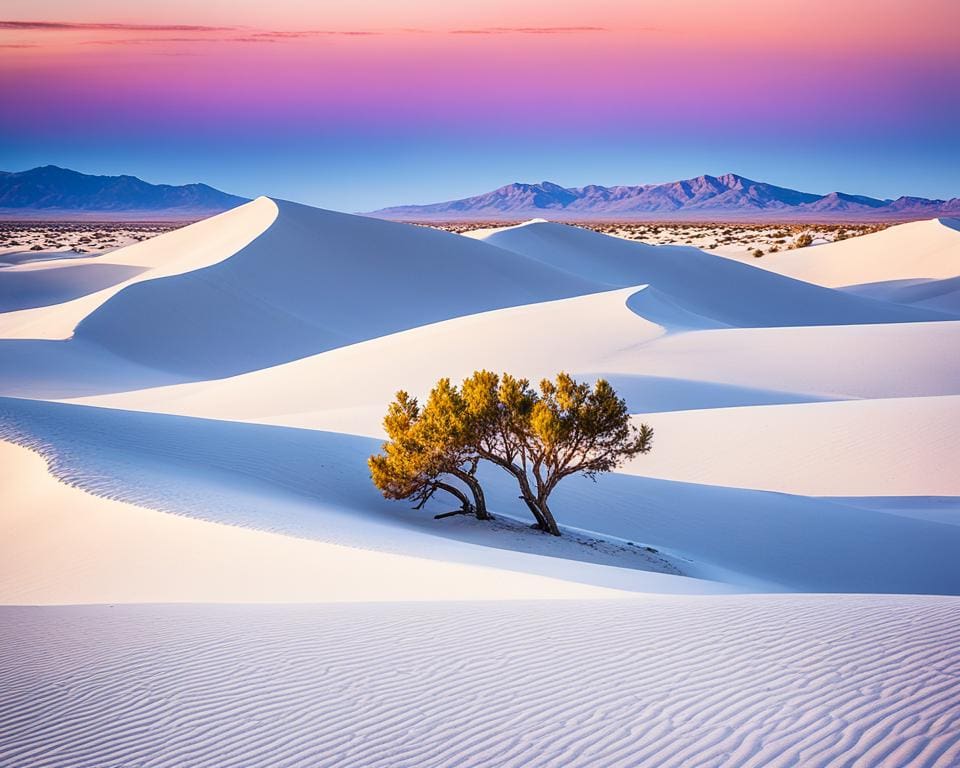White Sands National Park is a place of wonder in New Mexico. It mesmerizes visitors with its white gypsum dunes. This area covers 275 square miles. It’s a striking travel spot with gorgeous desert sands under clear blue skies.
About 4.5 billion tons of special gypsum sand stretch over the land. This fills around 45 million boxcars. White Sands is the biggest gypsum dune field in the world. It started as a national monument in 1933. By 2019, it became a national park. White Sands is a stunning sight, drawing countless visitors. They come to see its perfect views.
Exploring the Unique Features of White Sands National Park
White Sands National Park is famous for its stunning beauty and important nature. It is home to the largest gypsum dune field in the world. This place is special for exploring and enjoying. The park supports different kinds of life, offering a chance to see rare plants and animals.
The World’s Largest Gypsum Dune Field
The park covers 270 square miles with its gypsum dunes. The dunes shine brightly under the sun, thanks to their crystal makeup. As you walk, the view changes, showing the beauty of light on sand.
Flora and Fauna: Home to Unique Species
White Sands supports 800 species of animals, all adapted to this unique place. You can see creatures like the white mouse and several lizards. They show how life can evolve to fit anywhere.
The Dazzling Interaction of Light and Sand
The light plays with the dunes in wonderful ways. In the morning, the dunes look warm and bright. Then, at sunset, they turn cool and dark. This creates perfect moments for photos.

White Sands: New Mexico’s Glowing Desert Landscape
White Sands National Park is a special place with its vast dunes and trails. It stretches over 275 square miles. Here, you’ll see some of the most incredible scenes in the Southwest. Every step on this soft gypsum sand uncovers new, beautiful views, always changing.
Visiting the Stunning Dunes and Trails
There’s a trail for everyone at White Sands, no matter your hiking level. The Dune Life Nature Trail is a 1-mile loop. It’s great for learning about the desert’s plants and animals. For the more adventurous, the Alkali Flat Trail offers a tough walk with amazing views of the dunes at the end.
Activities for Adventurers: Hiking and Sledding
White Sands isn’t just for hiking; it has fun for all ages. Sledding down its soft sands is a blast for families and thrill-seekers. You can bring your own sled or get one at the visitor center. The landscape makes it a picture-perfect activity. Also, there are guided full-moon hikes from April to October. They turn the dunes into a magical nighttime scene, making every moment special.
Capturing the Beauty of White Sands through Photography
White Sands National Park is a dream spot for those who love taking photos. It covers over 275 square miles with the world’s biggest area of white gypsum sand dunes. This place gives photographers endless choices for shots. The wind creates stunning patterns in the sand, and the area’s plants add beautiful colors to the views. This setting is perfect for landscape and fine art photography.
The golden hour provides the best light for photos. This is just after sunrise and before sunset. The light at these times makes the sand’s textures and colors look amazing. To get in early and capture this beauty, photographers need special permits.
Photographers here can capture the simple beauty of a lone yucca plant or the complex play of light and shadow. White Sands is truly a paradise for photographers. It encourages visitors to see and capture the beauty of nature. Here, creativity meets the stunning backdrop of the desert.









